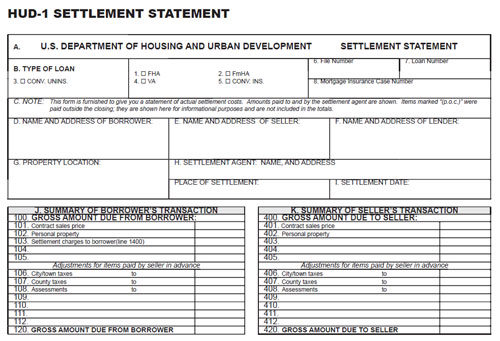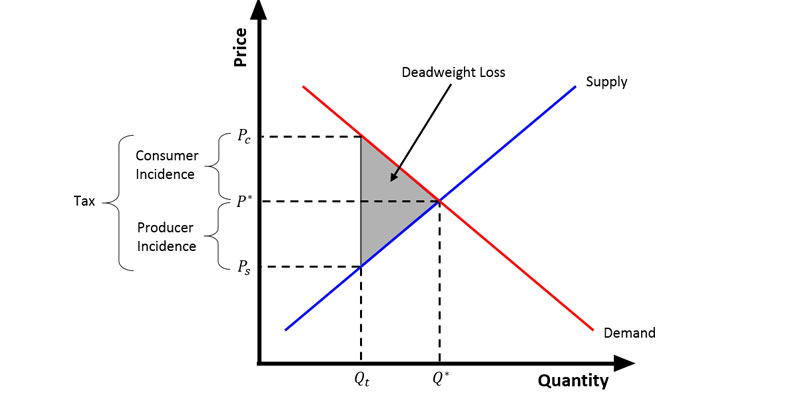An Ultimate Guide: What Is the HUD-1 Settlement Statement?
Feb 25, 2024 By Susan Kelly
Introduction
The HUD-1 form must be used in all real estate settlements in the United States involving federal mortgage loans per the Real Estate Settlement Procedures Act (RESPA). The law stipulated that this procedure was in this fashion. A HUD-1 statement would have been given to you if you applied for a mortgage on or before October 3, 2015. Borrowers applying for the vast majority of mortgage loans after October 2015 were given a new document called the "closing disclosure." The TILA RESPA Integrated Disclosures, or TRID for short, altered the processes for processing mortgages and providing important information, which prompted the shift. HUD-1 forms are typically used in mortgage refinancing and reverse mortgage transactions. They were first created in the United States.
Understanding a HUD-1 Form

The money you'll have to shell out to close the deal is broken out on the HUD-1. According to federal regulations, the form must be used as a standard real estate settlement for all mortgage refinancing and reverse mortgage transactions. Borrowers must be provided with a copy of the HUD-1 at least one day before the settlement, even if the numbers can be changed until the parties are seated at the closing table. This action is required to stay on the right side of the law. Before signing, most buyers and sellers seek advice from a third party, such as a lawyer, settlement agent, or real estate agent. Buyers are still called "borrowers" on the HUD-1 form, even if no loan is involved.
What's Included in a HUD-1 Form?
The HUD-1's reverse, or verso, is the side you should examine first. The borrower's fees are shown in the left column, while the fees the seller will pay are listed in the right column. The borrower is liable for the costs of the mortgage, such as the origination charge, discount points, credit report fee, appraisal cost, and flood certification price. Not only that, but there may also be prepaid interest payments, insurance premiums, taxes, title insurance premiums (both lender and owner), and closing agency fees to consider.
A seller's itemised list may include information regarding the real estate commission, any credits to the buyer that were contractually agreed upon, and the payoff of the buyer's mortgage. Sometimes a buyer's costs will be higher than the selling party's itemised expenditures, but that's not always the case. Numbers on the HUD-1 back page (verso) are added up, and the totals are written on the HUD-1 front page (recto). Amounts owed by the buyer to the seller and the seller to the buyer are shown at the bottom of the agreement's first page.
When Is the HUD-1 Distributed?
Before October 3, 2015, RESPA mandated that a copy of the HUD-1 be delivered to the borrower at least one day before the settlement. It's possible, though unlikely that we'll keep getting submissions right up to the last few hours of the contest. Many parties consulted with their real estate and settlement agents, but most buyers and sellers did so independently. The more eyes that looked at it, the more likely it was that flaws would be spotted, or so the theory went.
Mortgages That Require a HUD-1 Statement
While the HUD-1 form was once standard in real estate transactions, acquiring a typical home is no longer required. If you are dealing with a mortgage today and you receive a HUD-1 form, you are most certainly dealing with one of the following types of mortgages:
Reverse Mortgage
If you are a senior citizen getting a reverse mortgage to access the equity in your home, you will receive a HUD-1 settlement statement.
Refinance
The HUD-1 form may be provided to you in case of mortgage refinancing, albeit this is not usually the case. As an alternative, you may receive a closing disclosure, about which you can read more below.
Special Considerations
The Dodd-Frank Wall Street Reform and Consumer Protection Act of 2010 requires all lenders to provide a Closing Disclosure form to borrowers of conventional mortgages, jumbo mortgages, and jumbo reverse mortgages.

Conclusion
When financing a home purchase using borrowed funds, the HUD-1 form must be completed. Other frequent names for this document include "Settlement Statement," "Closing Statement," "Settlement Sheet," "HUD," and variations thereof. You must carefully read your HUD-1 statement if you ever receive one. If possible, have a real estate lawyer review the contract to ensure you aren't spending too much or overlooking any faults that could increase your expenses. It's important to remember that you may have to make payments on this amount for many years to come, so the date you receive your HUD-1 might have a profound impact on your financial future.

The application of cloud computing in the financial industry from the perspective of globalization

A Brief Overview of the Purpose of the Schedule 8812

All About Innocent Spouse Relief

Tax Wedge

Equity Financing vs. Debt Financing

Exploring International Money Transfer: Your Best Options for Sending Money Abroad

Things You Should Know About Early 401(k) Withdrawals

Why We Often Choose Now Over Later: A Look at Temporal Discounting

Ways to Calculate the Inventory Turnover Ratio

